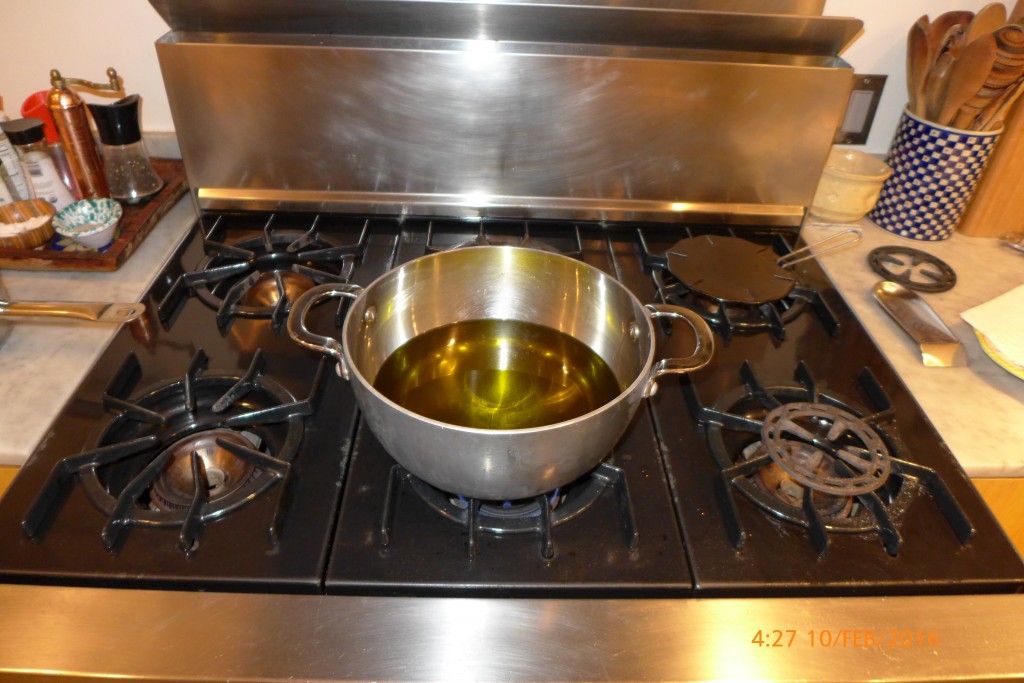On the Benefits of Frying
Fried Foods, are they bad for you or good?
1. It is not true that frying foods causes only harm. In fact, Italian families have long recommended eating fried foods at least once a week as a way to improve liver function.. More recently, a study published by the Journal of Medicinal foods confirmed this, and also found that cooking in olive oil at specific high temperature reduces the glycemic load of the food, preventing the absorbtion of carbohydrates.
2. Not all frying is equal! The “healthy” fry is that which uses exclusively extra virgin olive. First, because extra virgin olive oil is cold pressed and extracted naturally, while all other oils (those of corn, sunflower, peanut, etc) are extracted with the use of chemicals. Second, olive oil has a very high level of smoke resistence (around 410 degrees f), which means it can be heated very hot without its molecular structure breaking down, and becoming toxic. Though of course, even if the other oils are heated to below their smoking point, the fact that they were extracted by chemicals make them compromised.
harmful to the body. With the other oils, this process begins at 250 degrees.
How to Fry
1. Heat the oil to 356 degrees. Why this temperature? Because at this temperature the moisture in the dough (or whatever else you are frying) is released almost immediately, causing the starches to become resistent to gastric juices: basically, becoming more easily digestible and less caloric.
2. Cut or chop food into small pieces. This way, they fry faster, and more quickly form that outer crust that prevents the food from absorbing the oil. Add enough oil to the pan to generously cover what you will be frying.
3. Onces fried, drain and dry on layers of paper towels so to absorb as much excess oil as possible. Then of course, transfer fried items to another plate.
4. While frying, be sure to change the oil as often as is possible so to stop the degredation Do not though add new oil to a pan of old oil. This will merely increase the speed of degredation.
Sara Farnetti, Noemi Malandrino, Davide Luciani, Giovanni Gasbarrini, and Esmeralda Capristo. Journal of Medicinal Food. February 2011, 14(3): 316-321. doi:10.1089/jmf.2009.0264

